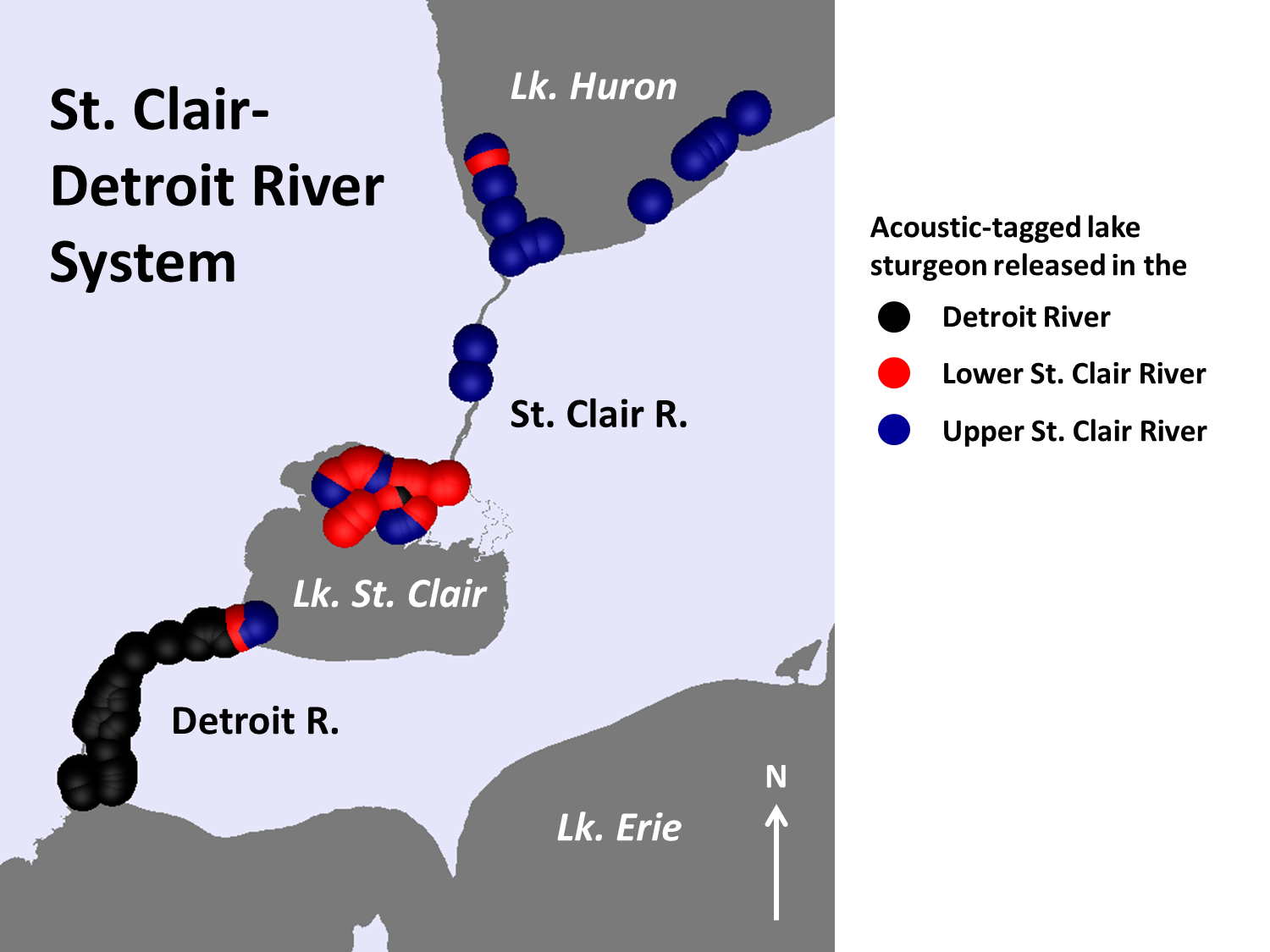USGS scientists at the Great Lakes Science Center in Michigan are using acoustic telemetry to describe the movements of fish in the St. Clair-Detroit River system on the border between Michigan and Ontario, Canada. This research will be used to support Great Lakes fishery managers in restoring native species, such as lake sturgeon, and controlling exotic species, such as sea lamprey.
With acoustic telemetry, fish are captured, surgically implanted with high-powered acoustic tags, and then released back into the environment. Networks of acoustic receivers throughout the Detroit-St. Clair River system, Lake Huron, and Lake Erie enable scientists to simultaneously track the movements of hundreds of acoustic-tagged individuals at landscape-level spatial scales.
For lake sturgeon, use of acoustic telemetry revealed that movements and habitat use differs among individuals originally captured in the Detroit River, lower St. Clair River, or upper St. Clair River. Acoustic telemetry also documented potential sea lamprey spawning areas in the system, which could help resource managers further control sea lamprey populations.

Acoustically tagged lake sturgeon in the St. Clair-Detroit River system, 2014. Color indicates the geographic location of original capture of the specimen before tagging. Dots represent habitat use of tagged fish. The map shows an area of approximately 75 x 115 miles.

